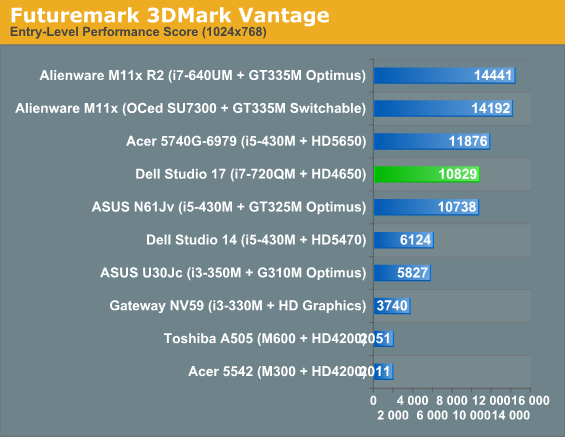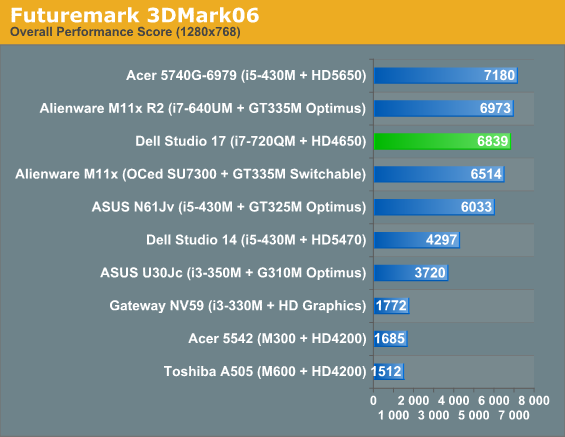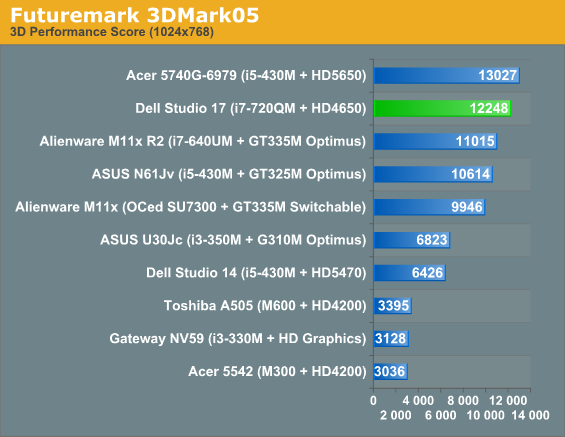Dell Studio 17: When Gaming Isn't Enough
by Dustin Sklavos on August 26, 2010 12:10 AM EST
Synthetic Graphics Performance with 3DMark
It should be stated first and foremost that the Studio 17 isn't a gaming notebook and expectations should be adjusted accordingly. However, the included ATI Mobility Radeon HD 4650 is no slouch either. It sports 320 shaders—the same as the Radeon HD 3870—with a 550MHz core clock, and a 128-bit memory bus attached to 1GB of DDR3 running at 1.4GHz. 1GB of video memory is largely wasted on a core like the 4650, though Win7 can make use of the VRAM for some windowing tasks, but nonetheless that DDR3 should allow this mobile version to eclipse the desktop Radeon HD 4650, which is usually strangled by slow DDR2.




As expected, the 4650 puts in a strong showing. While it's not going to beat its successor—the 5650—anytime soon, it does get remarkably close, and in every bench but Vantage gets close to or outright beats NVIDIA's mainstream champion, the GeForce GT 335M. The RV730 core at the heart of the 4650 was fantastic when it first started trickling into notebooks and it remains an excellent alternative to larger, more power-hungry graphics options.










41 Comments
View All Comments
Hrel - Friday, September 3, 2010 - link
I'd love to have basically this exact same laptop in a 15" Variant. I'd pay for the 1080p screen, and I'd even be ok with a mobile hyperthreaded dual core CPU, like the Core i7620. This type of laptop is exactly the class I want, good for media purposes, viewing and editing, and still able to play all the games I play. I REALLY REALLY don't care if it can max out crysis. As long as it plays the games, even if the graphics settings are on minimum, then I'm good. My desktop can handle all that eye candy.